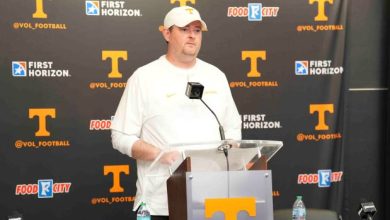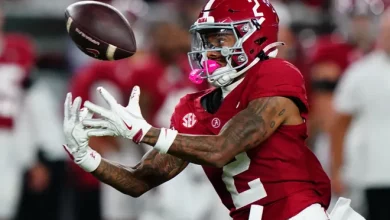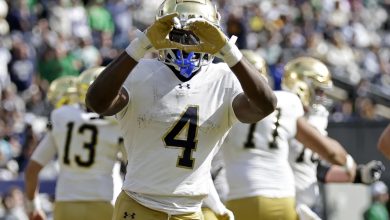Chris Pollard’s departure signals a significant problem for Nina King and Duke athletics, highlighting potential instability and challenges in retaining top coaches within the program’s competitive landscape.

In the world of college sports, coaching stability is often a reflection of the broader health and direction of a program. When a prominent coach leaves, especially amidst a backdrop of other high-profile departures, it can serve as a red flag signaling deeper issues within the athletic department. Recently, the departure of Chris Pollard from Duke University’s baseball program has sparked conversations about the stability of Duke athletics and the challenges Nina King, Duke’s Director of Athletics, faces in maintaining a competitive and cohesive athletic environment.
This analysis explores the significance of Pollard’s departure, its implications for Duke athletics, and the broader issues that may be undermining the program’s stability. It considers the factors that influence coaching retention, how leadership transitions impact student-athletes and recruiting, and what steps might be necessary to restore confidence and stability within Duke’s athletic department.
The Context of Chris Pollard’s Departure
Chris Pollard has been a highly respected figure within college baseball, leading Duke’s program since 2012. Under his leadership, the Blue Devils have experienced notable success, including multiple NCAA Tournament appearances and a reputation for developing competitive teams. Pollard’s commitment to player development and team culture made him a valued figure on campus and within the college baseball community.
His decision to leave Duke, therefore, signals more than just the loss of a coach—it underscores potential systemic issues. The timing of his departure, following other high-profile coaching exits in college sports, amplifies its significance. It raises questions about the department’s ability to retain top-tier coaching talent and whether Duke’s athletic environment is conducive to sustained success.
What Does Pollard’s Departure Signal?
1. Recruitment and Retention Challenges
One of the primary concerns stemming from Pollard’s departure is the difficulty Duke may be facing in recruiting and retaining coaches. In college sports, coaches often serve as the face of the program; their stability directly influences the program’s reputation and student-athlete development.
If top coaches are leaving for opportunities elsewhere—whether for better resources, competitive prospects, or personal reasons—it suggests that Duke may be struggling to offer a compelling environment. Factors such as budget constraints, facility limitations, administrative support, or perceived competitiveness could be contributing to this instability.
2. Broader Institutional Challenges
A single coaching departure can sometimes be isolated, but multiple high-profile exits often point toward institutional issues. These might include:
- Resource Allocation: Athletic departments require substantial investment to compete at the highest levels. If funding is inadequate or unevenly distributed, coaches may seek opportunities where they feel their programs will be better supported.
- Leadership and Vision: Effective leadership from the athletic director and university administration is crucial. If there is a lack of clear vision, strategic planning, or communication, it can erode confidence among coaching staff.
- Culture and Environment: A positive, supportive culture fosters long-term commitment. Conversely, a toxic or unstable environment can lead to increased turnover.
3. Impact on Student-Athletes and Recruiting
Coaching stability is vital for student-athlete development and recruiting efforts. High-profile departures can signal turmoil, dissuading prospective athletes from choosing Duke, and can disrupt existing teams’ cohesion. The perception that the program is unstable might lead recruits to favor more stable programs elsewhere, impacting the long-term competitiveness of Duke athletics.
The Significance for Nina King
Nina King, as the athletic director, bears significant responsibility for the current state of Duke athletics. Her leadership is critical in addressing the challenges highlighted by Pollard’s departure. Several key issues are relevant:
1. Leadership and Communication
King’s ability to articulate a clear vision for Duke athletics and to communicate a plan for stability and growth is essential. Transparency about department priorities, resource allocation, and support for coaching staff can rebuild trust and confidence.
2. Resource Management and Investment
Investing in facilities, staff development, and competitive compensation packages are vital to attracting and retaining top coaches. If financial constraints are contributing to instability, strategic planning and fundraising efforts must be prioritized.
3. Culture Building and Support
Creating a positive environment where coaches feel valued and supported encourages long-term retention. This involves fostering open communication, recognizing achievements, and providing pathways for career advancement.
4. Strategic Planning and Long-Term Vision
Implementing a comprehensive strategic plan that aligns with the university’s broader mission can help stabilize the department. This includes setting realistic goals, investing in key sports, and ensuring consistent policies that support staff and athletes alike.
Broader Implications for Duke Athletics
1. Reputation and Competitiveness
Repeated coaching departures risk damaging Duke’s reputation as a competitive athletics program. For a university that prides itself on academic excellence and a storied athletic tradition, perceived instability can undermine recruiting efforts across all sports.
2. Athletic Department Sustainability
High turnover may signal underlying financial or administrative issues that threaten the department’s sustainability. Addressing these proactively is essential to maintaining a balanced, successful athletic program.
3. Impact on Other Sports
While Pollard’s departure specifically affects baseball, it can have ripple effects across other sports. Staff morale, recruiting pipelines, and overall departmental cohesion can be strained, affecting the entire athletic department’s performance.
Potential Causes and Underlying Issues
Several underlying factors may be contributing to the current instability:
- Budget Constraints: Navigating the financial landscape of college sports can be challenging, especially with the increased costs associated with facilities, staff salaries, and compliance.
- Competitive Pressure: The desire to compete at the highest levels may be hampered by institutional priorities or lack of strategic investment.
- Leadership Transitions: Changes in senior athletic administration or university leadership can create uncertainty and disrupt continuity.
- External Factors: Broader trends in college sports, such as coaching market inflation, NIL considerations, and changing recruitment landscapes, influence coaching stability.
Moving Forward: Strategies for Stability and Growth
To address these challenges, Nina King and Duke athletics should consider several strategic steps:
1. Conduct a Department-Wide Audit
Assess the current state of resources, staff satisfaction, and departmental culture. Understanding the root causes of turnover can inform targeted interventions.
2. Strengthen Support and Incentives
Offer competitive salaries, professional development opportunities, and recognition programs that foster loyalty among coaches.
3. Enhance Facilities and Resources
Invest in state-of-the-art facilities and support staff to make Duke an attractive destination for coaching talent.
4. Improve Communication and Transparency
Regularly update staff and stakeholders about departmental goals, challenges, and successes to build trust and a shared vision.
5. Foster a Positive Culture
Create an environment that values collaboration, innovation, and athlete-centered approaches to retain coaches and staff.
6. Proactively Engage with the Coaching Community
Build strong relationships within the coaching network to attract talent and stay informed about industry trends.
7. Emphasize Long-Term Planning
Develop a strategic plan focused on sustained success rather than short-term wins, ensuring stability even amidst fluctuations.
Recognizing the Significance and Moving Forward
Chris Pollard’s departure from Duke athletics is more than just the loss of a talented coach; it signals potential systemic vulnerabilities that could threaten the program’s future stability and competitiveness. For Nina King, it underscores the importance of strategic leadership, resource allocation, and cultural development within the department.
Addressing these issues proactively will be essential to restoring confidence among coaches, student-athletes, and recruits. By implementing comprehensive strategies rooted in transparency, investment, and community building, Duke athletics can navigate these challenges and position itself for long-term success.
Ultimately, Pollard’s departure should serve as a catalyst for introspection and reform. It’s an opportunity for Duke to reaffirm its commitment to excellence, stability, and growth across all sports. Through decisive action and visionary leadership, Duke can turn this challenge into a pivotal moment for renewal and advancement within its athletic program.









